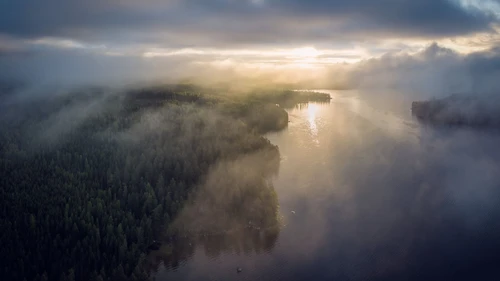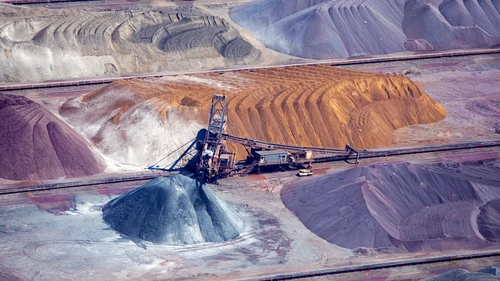
- Name:
- Peter Sandahl
- Title:
- Head of Climate and Environment
Sivua ei ole saatavilla suomeksi
Pysy sivulla | Siirry aiheeseen liittyvälle suomenkieliselle sivulleHow is Nordea working with climate and nature-related risks? Peter Sandahl, Head of Climate and Environment and Brent Matthies, Head of ESG Framework and Coordination, share insights.

Changes in the climate and natural environment affect society and pose multiple risks to the economy. The physical and transition risks associated with climate and nature-related changes can therefore impact the balance sheet and profitability of banks. Understanding and managing these risks and their impact over time are therefore important for our risk management and key considerations for Nordea’s strategy.
Nordea’s risk management framework includes a process to perform bank-wide materiality assessment to consider how climate and nature aspects can be drivers of prudential risks (e.g. credit, market, operational risks). Hence, over the past years Nordea has strengthened its risk management framework through a comprehensive internal approach to identify relevant climate- and nature-related risk drivers and perform materiality assessment of them.
Currently, Nordea’s assessment of materiality considers various levels of granularity to ensure relevant risk coverage across our operations. For example at the level of asset class, sector, client and geography. It includes both quantitative and qualitative components and is built on insights from other internal processes such as heatmapping, scenario analysis and stress testing.
In parallel, looking across our operating environment, Nordea has strengthened processes and capabilities to provide a forward-looking assessment on the relevant macro-trends, over the short, medium and long terms. Such analysis considers relevant regulations, technology developments, and physical risks at global, European Union (EU), Nordic and country levels, as well as sector-specific trends and developments.
The are a couple of key takeaways identified from these processes. First, climate and nature-related risks can have a material impact on Nordea’s credit risk and some aspects of operational (non-financial) risk. Second, in the long and medium term forward-looking perspective, regulatory and technological developments are expected to present potentially significant changes to Nordea’s business environment.
Physical risks are expected to drive material change in the long term time horizon as well, but the level of uncertainty remains high and will depend on the success of mitigation and adaptation measures in the coming years. These results provide Nordea with insights to build a holistic view on risks and opportunities and enhance our ability to prioritise our approach to climate and nature-related risks and opportunities.
During the last few years insights from our materiality assessment on climate and nature-elated risk drivers have been embedded in Nordea’s internal processes, internal rules and business plans to support the development of sustainable business strategies and risk management throughout the whole organisation. Examples of these are the integration to the credit assessments, overriders for credit ratings, stress testing and internal capital allocations.
The assessment and management of these risks and accompanying opportunities is a rapidly evolving field. For this reason, we strive to advance the quality and precision of our assessment. As an example, during 2024 we have been working to further strengthen our understanding of nature-related risks and opportunities, acknowledging the dependency and impact on nature from many sectors. Future areas of potential focus include the climate-nature nexus and the implications for social and governance risks.



Sustainable banking
Morningstar Sustainalytics has recently published a new report identifying companies that are taking steps to reduce emissions, set actionable targets and implement good governance practices. Nordea is highlighted for its significant progress in reducing emissions and its comprehensive climate targets.
Read more
Sustainability
Amid geopolitical tensions and fractured global cooperation, Nordic companies are not retreating from their climate ambitions. Our Equities ESG Research team’s annual review shows stronger commitments and measurable progress on emissions reductions.
Read more
Sector insights
As Europe shifts towards strategic autonomy in critical resources, Nordic companies are uniquely positioned to lead. Learn how Nordic companies stand to gain in this new era of managed openness and resource security.
Read more